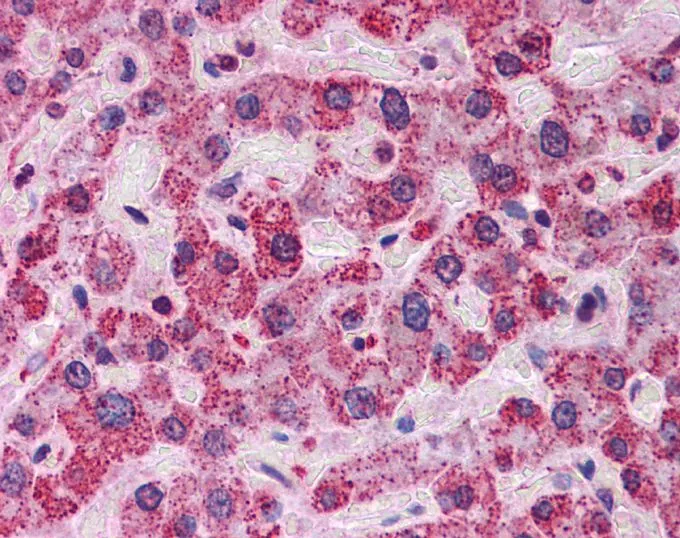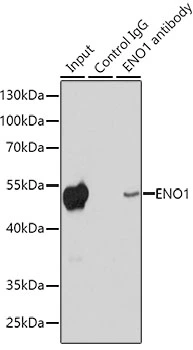
IP analysis of HeLa cell lysate using GTX55604 ENO1 antibody. Antibody amount : 1microg / 200microg lysate Dilution : 1:1000
ENO1 antibody
GTX55604
ApplicationsImmunoFluorescence, ImmunoPrecipitation, Western Blot, ImmunoCytoChemistry, ImmunoHistoChemistry, ImmunoHistoChemistry Paraffin
Product group Antibodies
TargetENO1
Overview
- SupplierGeneTex
- Product NameENO1 antibody - KO/KD Validated
- Delivery Days Customer9
- Application Supplier NoteWB: 1:500 - 1:2000. ICC/IF: 1:50 - 1:200. IHC-P: 1:50 - 1:200. IP: 1:50 - 1:200. *Optimal dilutions/concentrations should be determined by the researcher.Not tested in other applications.
- ApplicationsImmunoFluorescence, ImmunoPrecipitation, Western Blot, ImmunoCytoChemistry, ImmunoHistoChemistry, ImmunoHistoChemistry Paraffin
- CertificationResearch Use Only
- ClonalityPolyclonal
- ConjugateUnconjugated
- Gene ID2023
- Target nameENO1
- Target descriptionenolase 1
- Target synonymsENO1-IT1, ENO1L1, HEL-S-17, MPB1, NNE, PPH, alpha-enolase, c-myc promoter-binding protein-1, 2-phospho-D-glycerate hydro-lyase, ENO1 intronic transcript 1, ENO1 intronic transcript 1 (non-protein coding), MYC promoter-binding protein 1, alpha enolase like 1, enolase 1, (alpha), enolase-alpha, epididymis secretory protein Li 17, non-neural enolase, phosphopyruvate hydratase, plasminogen-binding protein, tau-crystallin
- HostRabbit
- IsotypeIgG
- Protein IDP06733
- Protein NameAlpha-enolase
- Scientific DescriptionThis gene encodes alpha-enolase, one of three enolase isoenzymes found in mammals. Each isoenzyme is a homodimer composed of 2 alpha, 2 gamma, or 2 beta subunits, and functions as a glycolytic enzyme. Alpha-enolase in addition, functions as a structural lens protein (tau-crystallin) in the monomeric form. Alternative splicing of this gene results in a shorter isoform that has been shown to bind to the c-myc promoter and function as a tumor suppressor. Several pseudogenes have been identified, including one on the long arm of chromosome 1. Alpha-enolase has also been identified as an autoantigen in Hashimoto encephalopathy. [provided by RefSeq, Jan 2011]
- Storage Instruction-20°C or -80°C,2°C to 8°C
- UNSPSC12352203

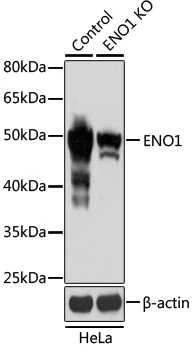
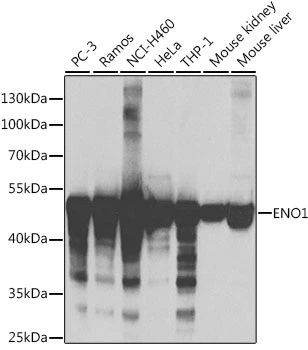
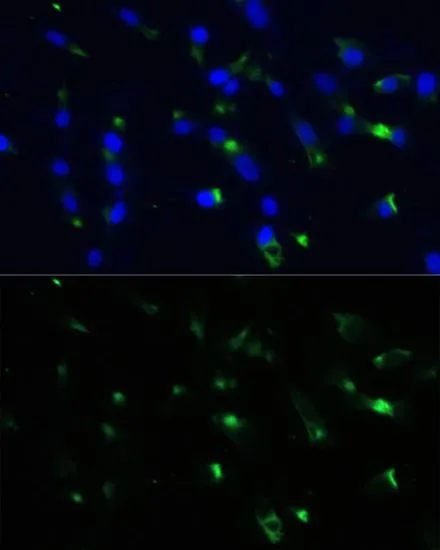
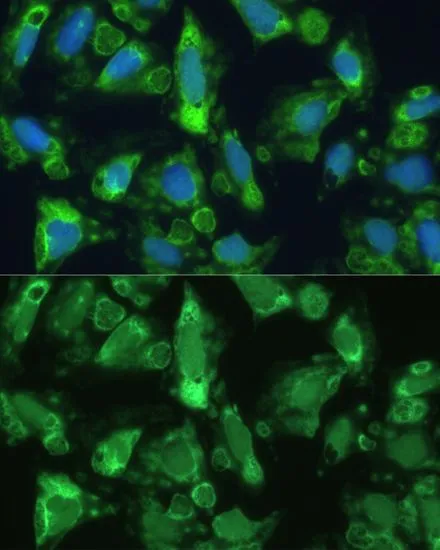
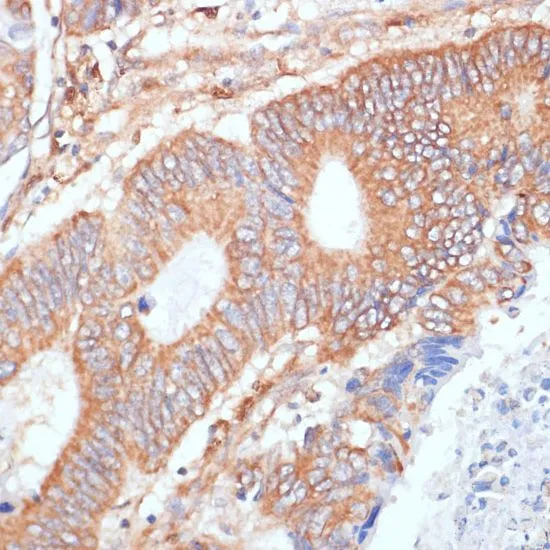
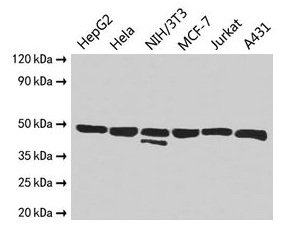
![FACS analysis of LNCap cells using GTX57673 ENO1 + ENO2 antibody [AT1G7]. Cell Number: 1 x 10? cells Primary antibody: Red line Antibody amount: 2-5 microg](https://www.genetex.com/upload/website/prouct_img/normal/GTX57673/GTX57673_20200204_FC_w_23061123_950.webp)
